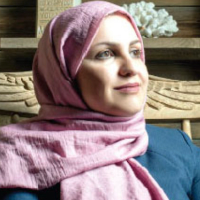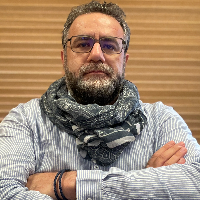A Comparative Study of Architecture Curriculum Content based on Zeitgeist
learning architecture. It seems that the mismatch with the needs and current problems of society, forgetting the values of Iranian culture and the lack of basic and applied research, has led architectural education in Iran to a developing trend towards the West lifestyles, norms and Culture. One of the main intention to western education model in architecture is that the modern learning and formal education of architecture in Iran born by the importing of French model (Ecole des Beaux-Arts in Paris and French Royal Academy), German model (Poly technical education, engineering learning and training Schools), English model (practical and experimental learning) and American model (combinational learning). Architectural education in Iran starting by applying French model; and after Islamic Republic revolution in 1979, if some schools and agents attempt to defining local model (Iranian and Islamic pattern) in architectural education but their models cannot developed through different architectural schools. In the last decades development of Anglo- American architectural education models impress all parties in it. Even though there are many researches concentrate on architectural education in contemporary Iran, but almost none of them focus on Zeitgeist. Interdisciplinary and its synchronicity with global approaches and the needs of society and social context, to recover and making efficient models are the aim of this study in both, which is suitable for Iran’s situation and Context. This study emphasizes the impact of the architectural education process in relation to the zeitgeist- which is derived from Hegelian literature and philosophy- and explaining its triple components which is dialectic, critical thinking, and updating in education. Finally, the educational programs evaluation has been done by testing these components.
The present study is a cross-sectional and applied research. The research methodology was based on qualitative method and content analysis. In research process, the contents of the curriculum of the nine top universities -which is selected in valid ranking and geographical and continental distribution- in the world were analyzed by focusing on Zeitgeist’s concept. Statistical descriptive analysis is the approach to findings and its conclusion.
This study showed that Delft University in two fields of history and theory courses with thirty five percent and in the field of technology with approximately thirty two percent, and the Massachusetts University with approximately fifty two percent share in the design department are leading. In interdisciplinary courses, California universities are distinguished from others by about thirty five of the courses. Interestingly, Iran's curriculum has not achieved a significant share in the competition among the world's universities.
This research showed that current problems, historical and cultural transcendence is equal to Zeitgeist, which is derived from our society. Although there are a variety of educational models and applied in specific and appropriate educating cases, in all of them some features have a key role to approach the Zeitgeist including changeability, program and design electivity, flexibility in learning curriculum, critical thinking, problem redefining in teaching approaches, and situations simulation.
-
The Role of Spatial Visibility on the Visitor Density in Exhibition Complexes (Case Study: Iran- Iraq War Museum)
Leila Aram, *, Shima Roshanzamir, Seyed Amirhossein Garakani
Bagh-e Nazar, -
The architectural reading of minimal space based on the semiotic approach in Wilson' work " EINSTEIN ON THE BEACH" theater
Bibi Mahboubeh Hosseini Zeydabadi, *, Jameldin Soheili
Creative City Design, Apr 2024 -
Evaluative Image in Social Spaces by Enhancing Collective Memory and Likability in the City (Case Study: The Area of Quds Square to Imamzadeh Hassan in the City of Karaj)
Sara Dasht Gard *, Maryam Akbari
Journal of Space and Place Studies, -
Constructing an Interdisciplinary Educational Model in Architectural Education
Sara Dashtgard, *, Heidar Jahanbakhsh
Karafan,




